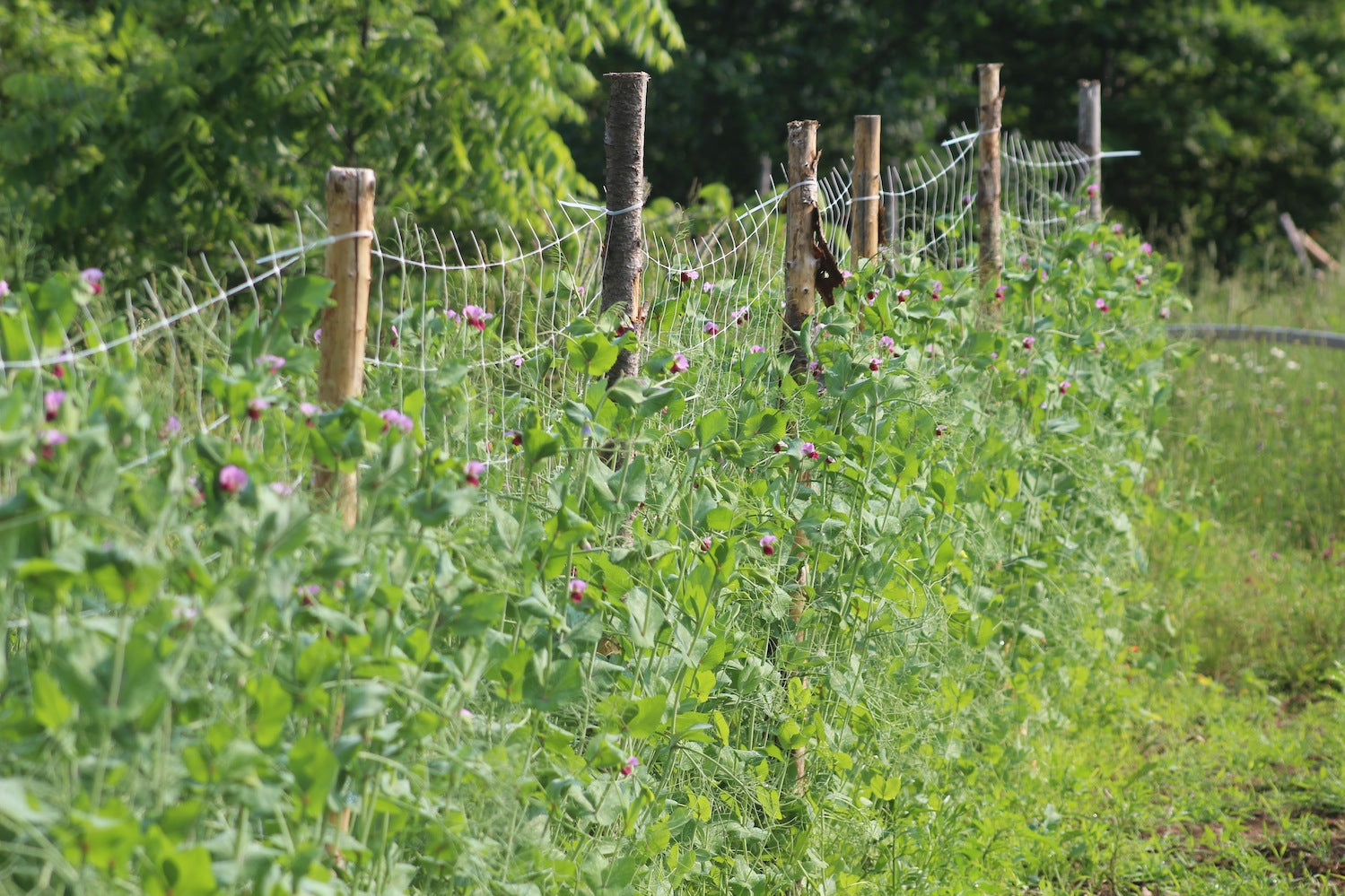


We always direct sow our peas, starting in early spring (April, or even late March depending on the season), right up until mid-June when hotter weather arrives. Although peas like it cool, their seeds can rot in cold wet soil. We can get away with early sowings in our sandy loam, but in heavier soil it would be wise to wait. I know a few folks with heavy clay soil who start peas inside and transplant them out for this reason. I like the plant the seeds densely, about 2” apart within each row. The vines don’t mind close quarters.


The plants send out tendrils as they grow, to grip onto anything and everything around them for support. Some varieties like Snow Wind and Spring Blush have extra prolific tendrils, and have an easier time supporting themselves. Short growing varieties are often fine planted densely with minimal extra support, while tall varieties can reach up to 6-8 feet when they're well supported. Mesh netting, bamboo stakes, sticks from the woods and old recycled fish netting all make great pea supports. I sow mine in two parallel rows per bed, with a row of mesh staked in between, cut to different heights for different varieties.
As legumes, peas fix nitrogen and can tolerate less than awesome soil. However they do best in moist, well amended soil (but then, which vegetables don’t?). They tolerate partial shade quite happily, in fact some shading from summer heat can be ideal.
After planting and staking, I pretty much let my peas do their thing until harvest time.
Saving seeds for peas is very easy, just leave the pods on the vine to dry and collect them when they’re ready. Ideally the vines can be left in the garden until the pods are fully brown and the seeds rattle inside. Here in NS that ideal often works, but late summer rains can make it a dodgy proposition some years. If the pods are nearly dry, with a rainy spell coming, often I’ll pull the whole vine and hang them inside to finish drying. As long as the pods are still attached to the stem, they’ll continue to develop and draw energy from the plant.
Once the pods are crispy and dry; just
Pea flowers are self-pollinating, and crosses are very rare.
